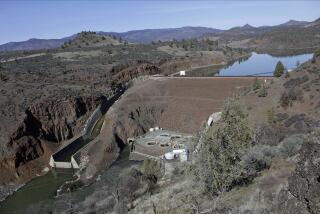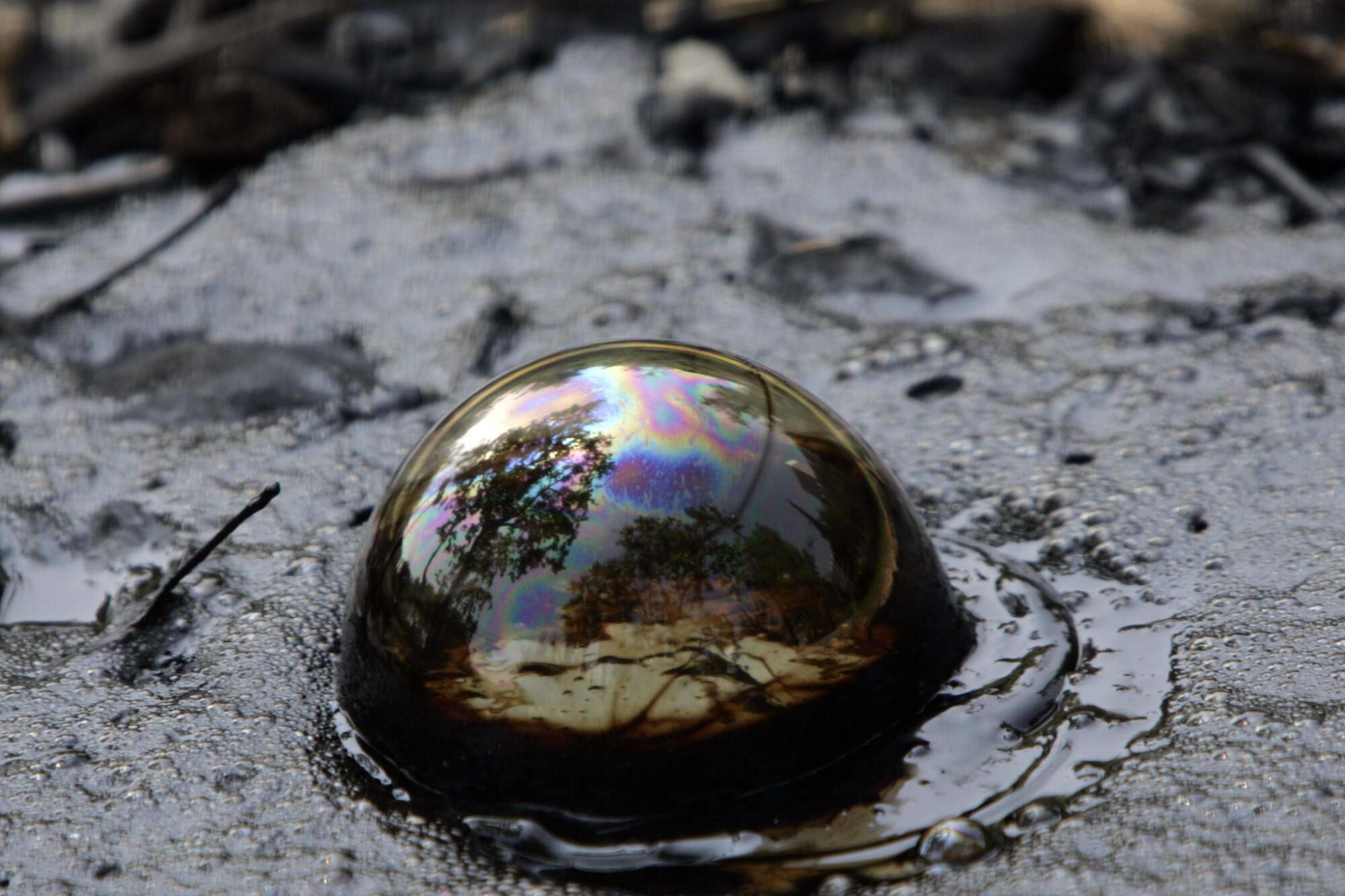
On a recent fall day, a dragonfly came to rest in Hancock Park, most likely searching for a place to lay her eggs. She landed on a slick of accumulated rainwater no more than a few millimeters deep.
But something was wrong. Her body held fast to the water, or to something just beneath it. She beat her wings furiously for several minutes before the flapping slowed, then stopped. A process that had taken place innumerable times in the last 40,000 years was over.
For the record:
4:22 p.m. Oct. 28, 2022An earlier version of this story said the dragonfly that got stuck in the asphalt was observed near Pit 23 of the La Brea Tar Pits. It was near Pit 91.
“Active entrapment, there,” Emily Lindsey, a curator at the La Brea Tar Pits, said as she observed the proceedings near Pit 91. The ill-fated insect had followed dire wolves, a Harlan’s ground sloth, a Western horse and a retinue of other creatures into that particular patch of unforgiving asphalt.
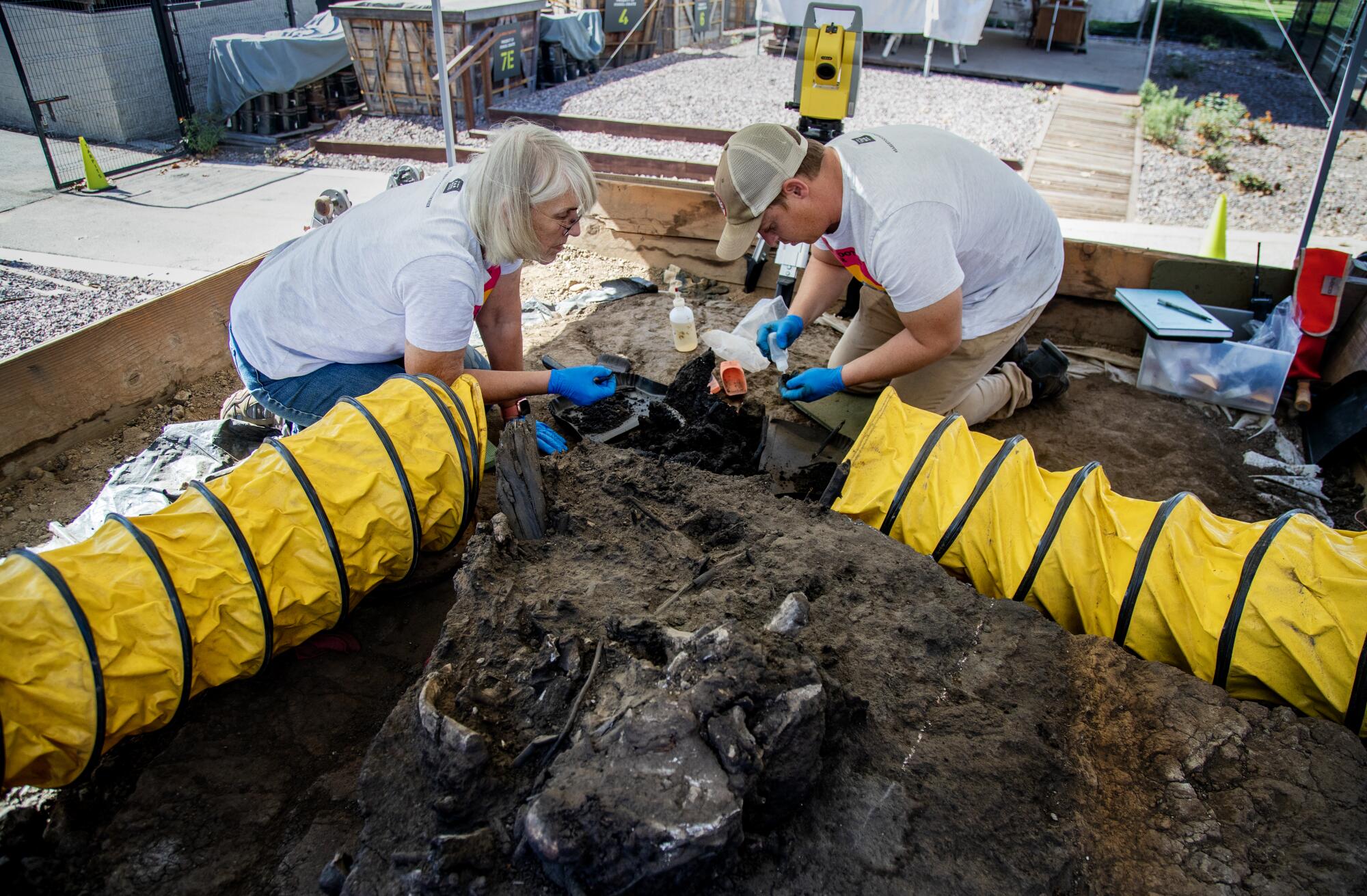
When one thinks of natural wonders, the Mid-Wilshire area is not what comes to mind. But no other spot on Earth has such a complete fossil record of the late Quaternary Period. It’s one of the planet’s best-kept records of the stretch of time that ended roughly 15,000 years ago in an extinction event featuring global warming, wildfires and human activity.
Intriguing as that past may be, what it tells us about the future may be even more important. The muck in Hancock Park holds valuable clues about where we’re heading now.
On Friday, the La Brea Tar Pits were recognized as one of the world’s First 100 IUGS Geological Heritage Sites. The designation is akin to a lifetime achievement award bestowed by the International Union of Geological Sciences, with the lifetime in question being that of this planet.
If UNESCO’s World Heritage sites are places that collectively tell humanity’s story, the IUGS sites are the story of our home, and of humanity’s efforts to understand it. (UNESCO is in fact one of the organizations supporting the IUGS project.) More sites will be named in coming years.
Just beyond the traffic and palm trees of Wilshire Boulevard, hidden beneath the shadows of nondescript office buildings, lie the tar-slicked bones of many thousand long-dead creatures.
Many of the designees unveiled in an exuberantly nerdy weeklong conference here in northern Spain are sweeping natural spectaculars where nature really shows off: the Grand Canyon, Iguazu Falls straddling the border of Brazil and Argentina, the top of Mt. Everest.
Nearly all are ensconced in forests, deserts or protected areas; some remain well-preserved simply because they are far from modern human settlements. (“It’s quite remote to get to,” a British geologist said mildly of Sirius Passet, an exquisite collection of Cambrian fossils in the far reaches of north Greenland that is on the list.)
Of the 100 inaugural sites, exactly one is located in the middle of a city.
::
Los Angeles knows about the Tar Pits, obviously. Before the pandemic, nearly half a million people visited each year. It rarely takes more than one sighting of a fiberglass mammoth family watching its mother sink into “tar” for the image to sear into one’s brain. (Nearly everything about the sculptures is scientifically inaccurate, by the way, but the emotional impact is real.)
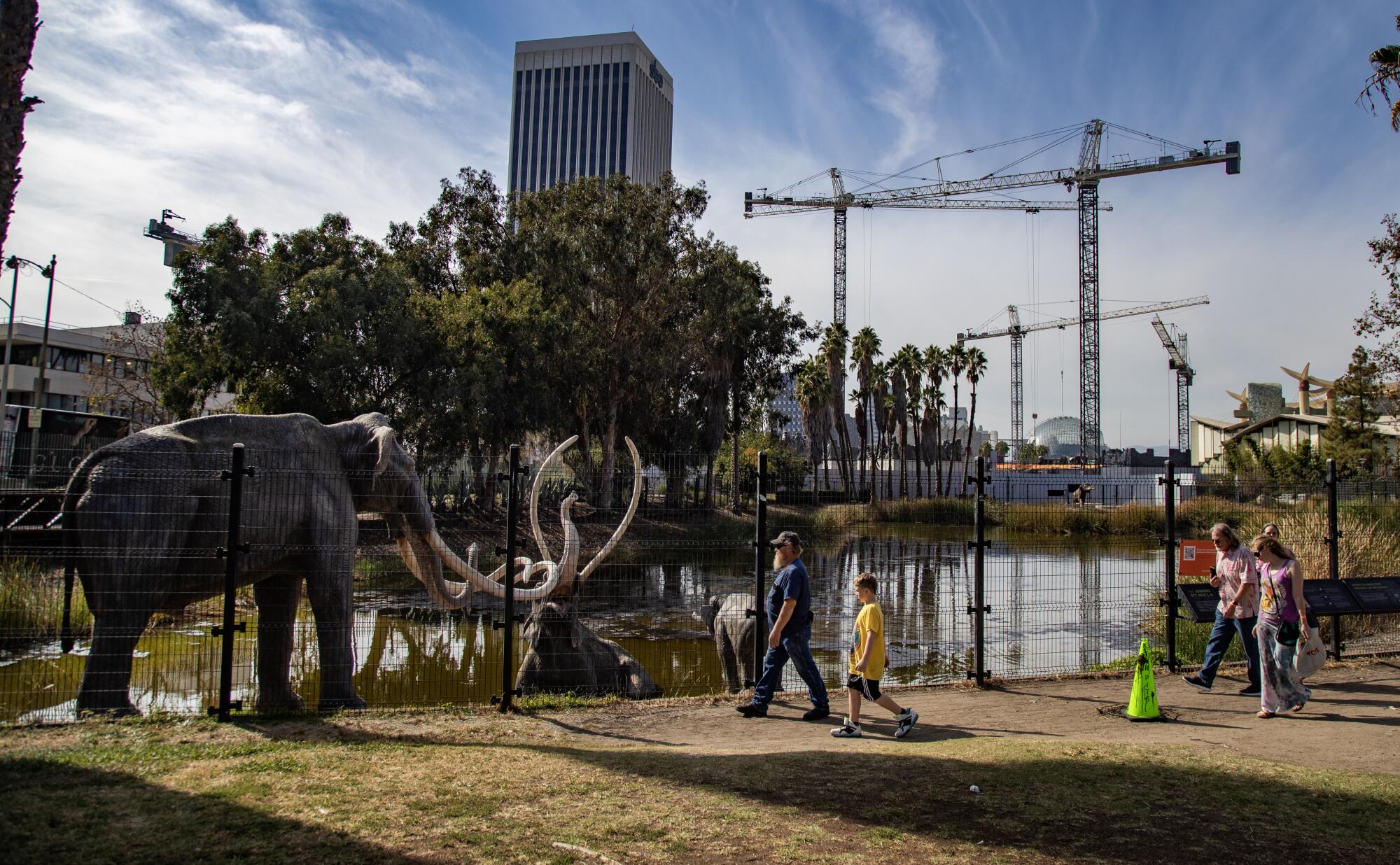
Still, the Tar Pits are not the city’s signature attraction, and they lack the kind of gravitas that other sites on the IUGS list command. No one abandons a Lime scooter on the Perito Moreno Glacier in Argentina or builds an Equinox gym right next to the Zambezi River’s Victoria Falls.
What may not have fully sunk in for Angelenos on those field trips and family outings is how crucially important the Tar Pits are for understanding life on this planet.
The Tar Pits don’t really contain tar, which is a byproduct of various types of fossil fuel production. They’re actually what are known as asphalt seeps.
The sticky stuff captured mammoths, saber-toothed cats, giant sloths and other iconic Ice Age mammals along with a near-perfect cross-section of the world they inhabited: birds, insects, plants, seeds, pollens. The fossils in the pits can tell scientists what the animals ate, what their environment looked like and what made them sicken or die.
“There is just nothing else like it,” said Lori Bettison-Varga, president of the Natural History Museum of Los Angeles County, which oversees the site in Hancock Park.
::
At the other end of the flashiness scale are the towering rock formations along the beach in Zumaia, a small town in Spain’s Basque Country where the IUGS kicked off its celebration of geological heritage sites. “Game of Thrones” filmed scenes on the shore, and the CGI dragons added later in production are less impressive than what nature put here first.
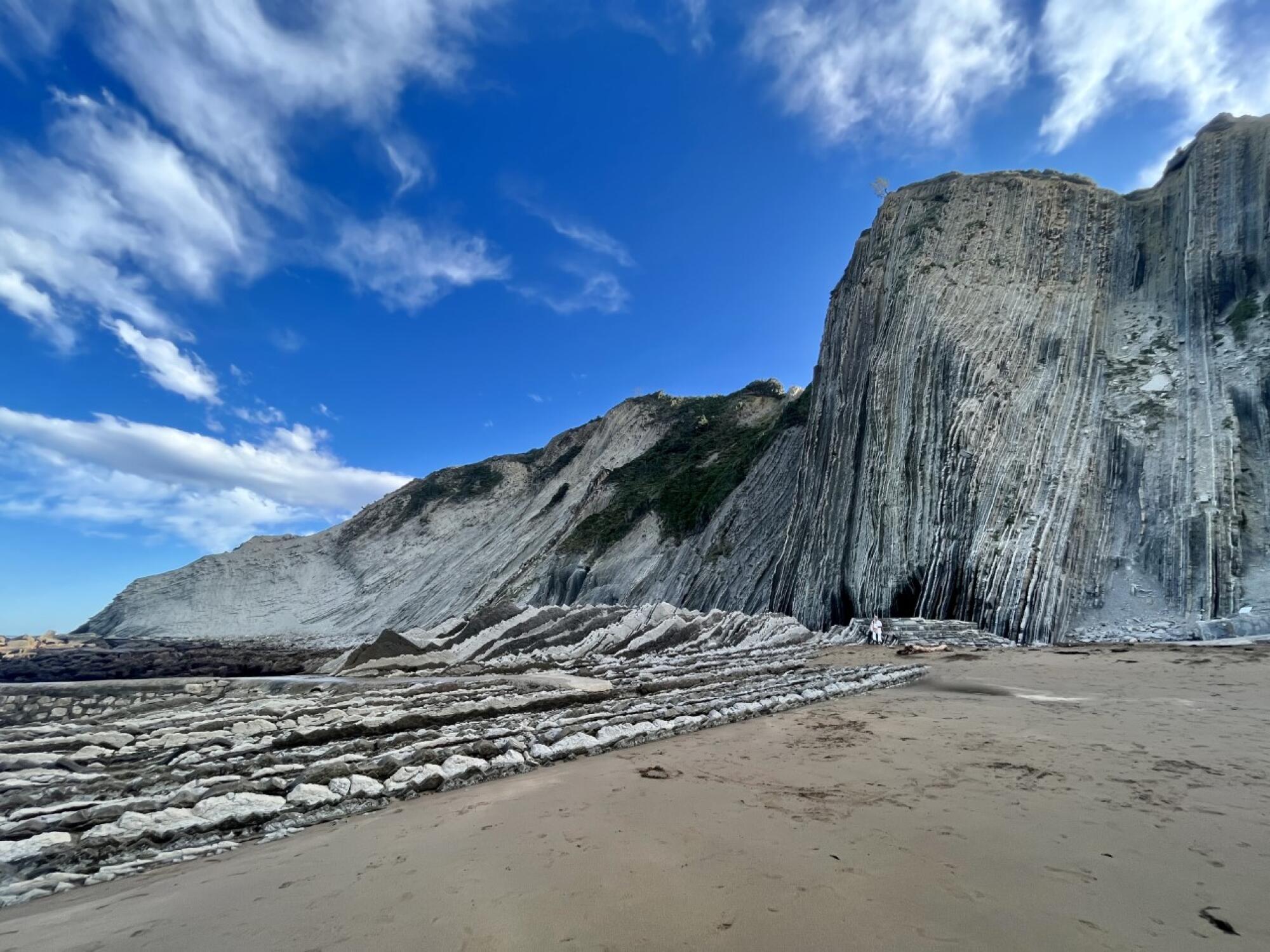
The sheets of striated rock reach up to 700 feet high and line more than six miles of coastline. Once part of an ancient seafloor, each layer contains roughly 100,000 years’ worth of accumulated sediment, marking the passage of time like rings in a tree.
The rock built up at the bottom of the ocean for more than 50 million years, until the titanic force of the Iberian Peninsula smashing into Europe forced it all upward, like a waking giant tossing off his blankets.
Zumaia’s flysch — the geologic term for this kind of rock formation — is not the only flysch on Earth. But it is by wide agreement the very best flysch of all.
So, of course, dozens of scientists boarded a tour boat to admire it from the water.
“There,” said Regan Dunn, a paleobotanist at the La Brea Tar Pits, as she pointed at a fold in the rock. “That’s the K-Pg boundary” — the visible line of iridium deposits left by the asteroid strike that wiped out the dinosaurs and roughly 75% of other living things on Earth.
The vessel listed to one side as passengers rushed to take photos the way some Los Angeles tourists do on bus tours of movie star homes.
This summer a team of paleontologists piled into trucks in Los Angeles and set out for scorching southern Utah to collect a stegosaurus fossil.
Later, Dunn and Luis Chiappe, the Natural History Museum’s head of research and collections, hiked down the flysch to get a closer look. The strip was about 2 to 3 inches wide, with a mineral-like texture and cookies-and-cream color completely different from the miles of rock on either side of it.

The K-Pg boundary marks the end of one version of the planet. Dunn placed her hands on the rock ballooning above it, which represents the resurgence of life in the millions of years after the asteroid struck.
“A world without dinosaurs,” she said, running her hands along the outcrop. “Can you feel it?”
::
It is fair to say that paleontology is not L.A.’s best-known industry. The Tar Pits site is small enough that even many of the experts attending the IUGS summit weren’t familiar with it.
“When I saw the photos, and saw the indication of Quaternary, tar and the fossils, I said, ‘Wow,’” said Marie-Luise Frey, a geologist who manages the nonprofit organization that oversees the Messel Pit Fossil Site, an Eocene-era fossil bed in a forest outside Frankfurt, Germany, that also made the IUGS list.
“It’s absolutely amazing,” Frey said of the Tar Pits. “I don’t know any other site where it is like that.”
The La Brea Tar Pits, formed some 38,000 years ago and excavated in 1913, are getting a fresh new look.
In a way, the Tar Pits are a big part of what built Los Angeles into the city it is today.
Chumash and Tongva people used the local asphalt to waterproof boats and baskets. The first oil field in Los Angeles was discovered in 1892 after two unsuccessful gold prospectors dug into an asphalt seep near what is now Dodger Stadium. By the early 1900s, L.A.’s oil boom was officially underway, and the most productive field in the state covered the area that is now called Hancock Park.
George Hancock, owner of the Rancho La Brea Oil Co., was intrigued by the unusual bones his workers unearthed. He donated 23 acres of land to Los Angeles County specifically for the fossils’ preservation and display. The La Brea Tar Pits now occupies 13 of those; the Los Angeles County Museum of Art and a public park make up the rest.
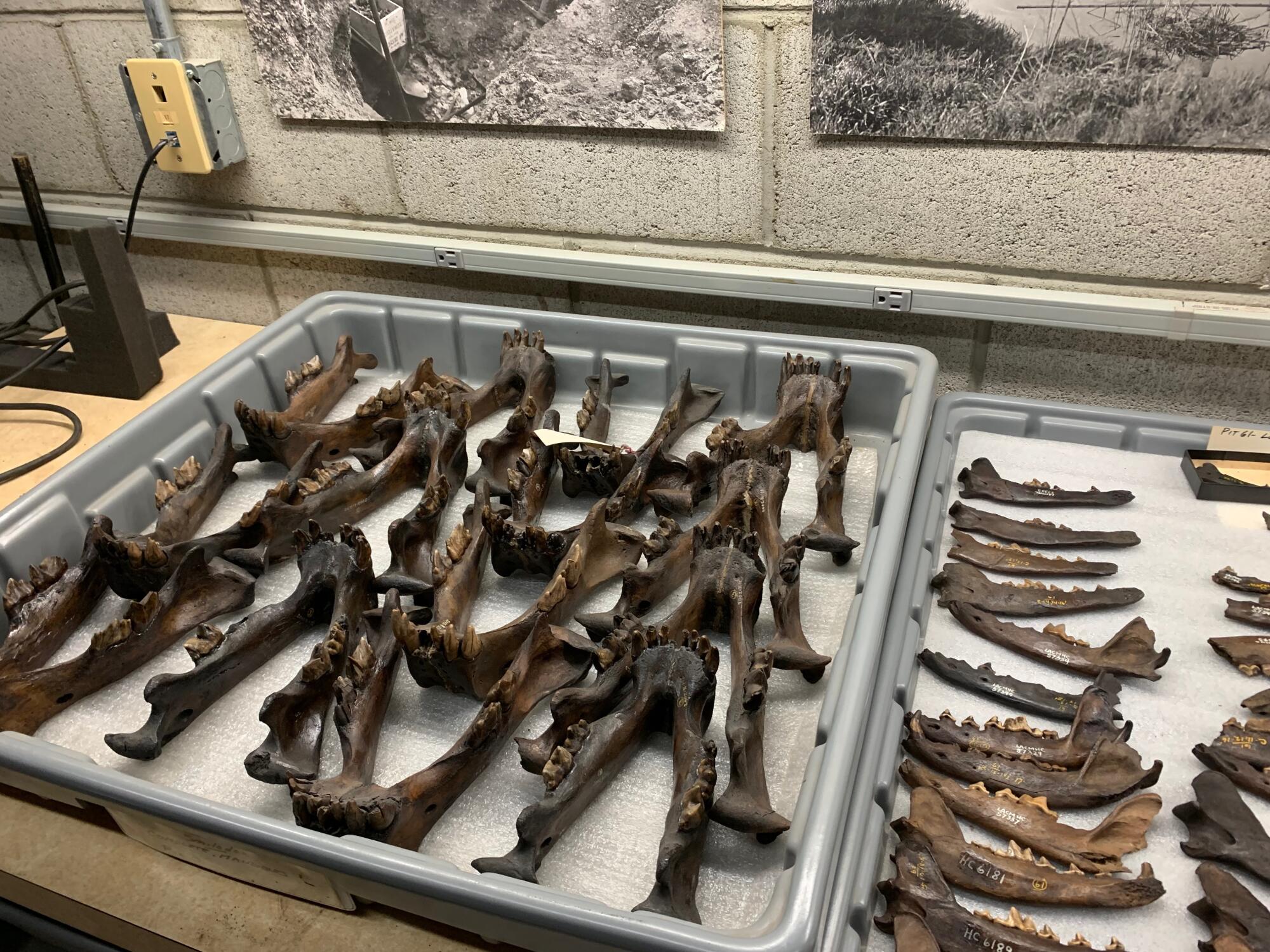
L.A.’s Quaternary fossils stretch far beyond the boundaries of the one place in the city set up to deal with them. When virtually anything is built near Mid-Wilshire, the Natural History Museum receives crateloads of fossils unearthed during construction.
The Academy Museum of Motion Pictures: fossils. That Equinox gym: fossils. The underground parking structure at LACMA revealed 16 new pits — essentially 16 giant, jumbled knots of ancient tar, bone, plants and pollen. Each was carefully excavated by a landscaping company, boxed up and carted to the Tar Pits.
Every Thursday morning, Judith Sydner-Gordon puts on the same simple uniform: khaki cargo pants and an electric orange T-shirt with a saber-toothed cat emblazoned across the front.
Sometimes it’s hard for visitors to think of the Tar Pits as real, said Lindsey, the curator.
“People come to Los Angeles expecting to see experiences that are imagined, that are created,” she said, noting the proximity of Hollywood and Disneyland. “Our excavation staff, the paleontologists who are digging up fossils — they think they’re actors. And they think the people working in the fossil lab are actors. They’ve even thought that they were holograms, or animatronic.”
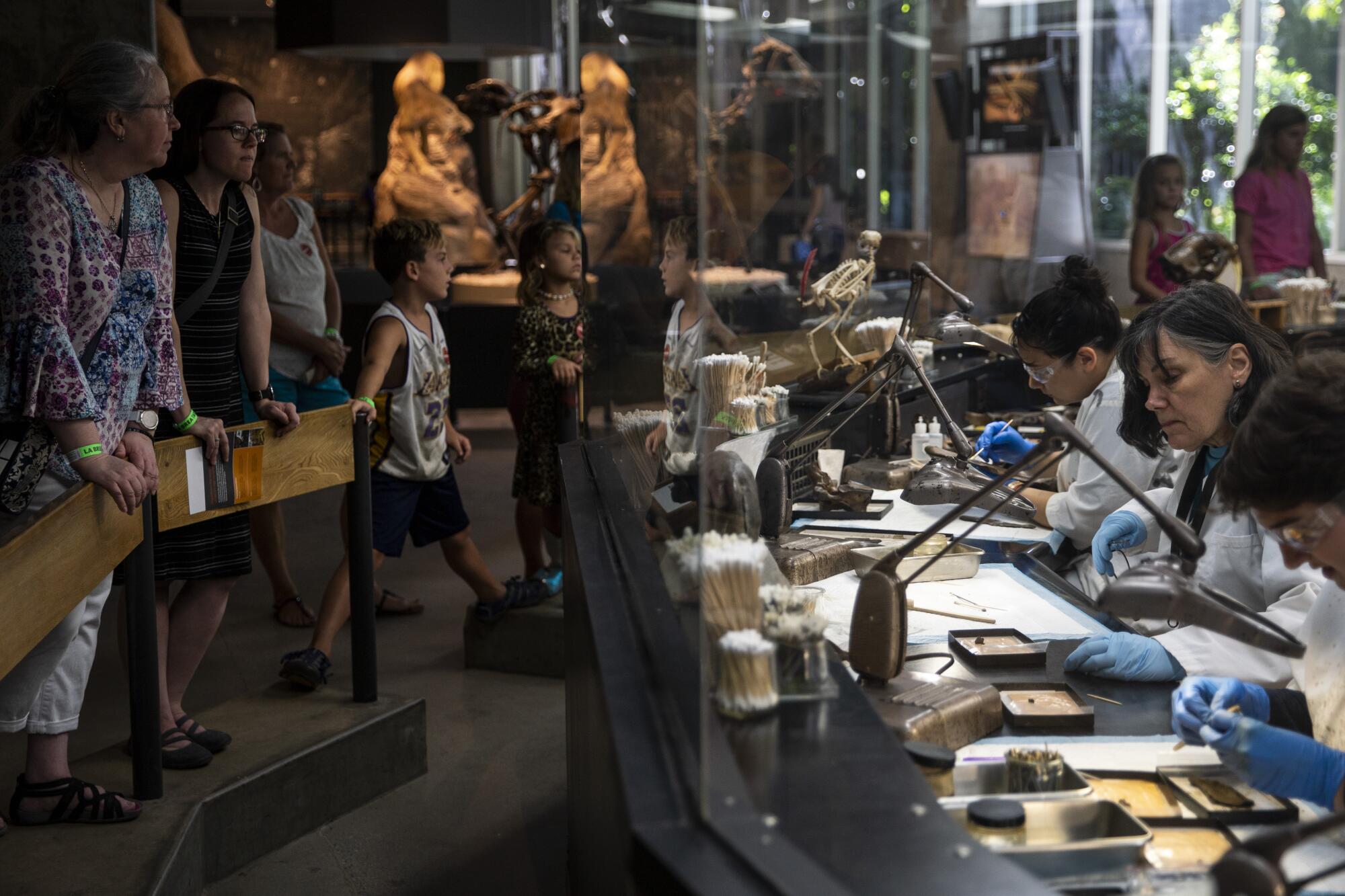
It’s also hard for people to understand that the events captured in the asphalt took place relatively recently. Dinosaurs went extinct about 65 million years ago. The Columbian mammoths featured in that faux family drama were last on this planet 10,000 years ago. In geologic terms, that is nothing at all.
Squirrels, birds and bugs still get stuck in the exposed pits at Hancock Park. Paleontologists don’t have to imagine what the process looked like, the way they do with dinosaurs — they can watch it happen, in the same place it did 35,000 years ago. They can see how water covers the asphalt the morning after a rain, and that the deadly traps would have looked like enticing drinking holes to the many creatures who have died there.
That’s why the Tar Pits matter. They show us what the last major extinction event looked like as we appear to enter another one largely fueled by consumption of the petroleum that trapped all those earlier animals.
Accelerating wildfires played a key role in the Great Dying by destroying ecosystems too quickly for plant and animal species to adapt.
It’s a record of what died, of course, but it also tells us what lived, and possibly even why.
“It’s not just a story of extinction,” said Bettison-Varga, the Natural History Museum’s president. “It’s a story of survival.”





